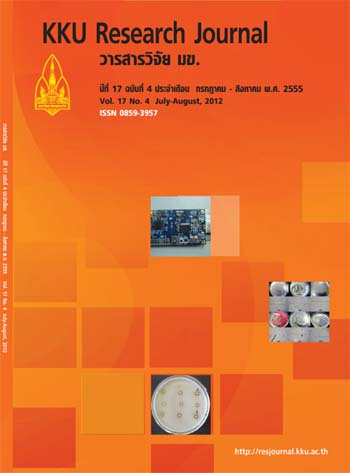Health risk assessment on the consumption of lead-contaminated aquatic animals from fishery resource in the overflow marsh.
Main Article Content
Abstract
This cross-sectional survey research aimed to determine lead exposure and risk assessment on the consumption of lead-contaminated aquatic animals from fishery resource in the overflow marsh, Khon Kaen province. The interviews of 75 residents on the consumption of the aquatic animals (n=75) were conducted. The lead concentrations were analyzed by using Atomic Absorption spectrophotometry. The lead concentrations in Nile tilapia (n=20), Common silver barb (n=20), River snail (n=20) and Golden apple snail (n=20) were between 0.02-0.07, 0.01-0.22, 0.36-2.38 and not detected -0.95 mg/kg dry weight, respectively. The concentrations in the most aquatic animals were not exceeded the standards, except the lead concentrations of River snail which were exceeded the Thailand standard (1 mg/kg) for 30.00% and exceeded the Australia and New Zealand standard (2.0 mg/kg) for 10.00%. Health risk assessment was performed according to the US.EPA guideline at an intake rate and lead concentration of all aquatic animals (at 95th percentile) which were 136.50 g/day and 1.05 mg/kg dry weight, respectively. The potential health risk of lifetime average exposure dose of lead ingestion of all aquatic animals from this marsh was 1.63μg/kg/day, this was not exceeded Provisional tolerable weekly intake (PTWI) for lead is 25μg/kg (or 45.64% PTWI).
Article Details
How to Cite
Kiatsayomphu, S., & Chaiklieng, S. (2017). Health risk assessment on the consumption of lead-contaminated aquatic animals from fishery resource in the overflow marsh. Asia-Pacific Journal of Science and Technology, 17(4), 671–686. retrieved from https://so01.tci-thaijo.org/index.php/APST/article/view/83277
Section
Research Articles


